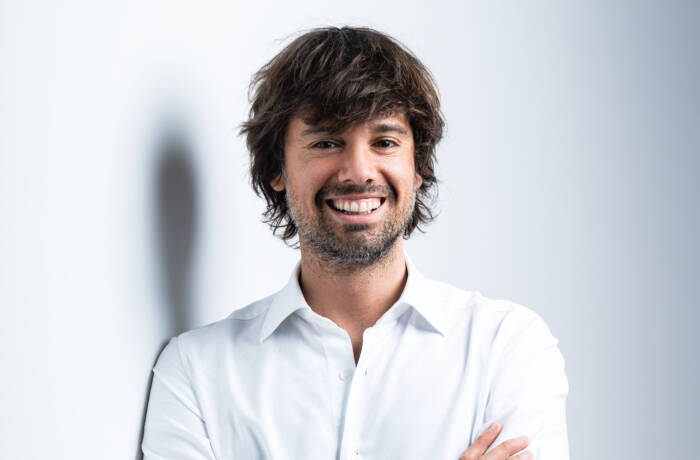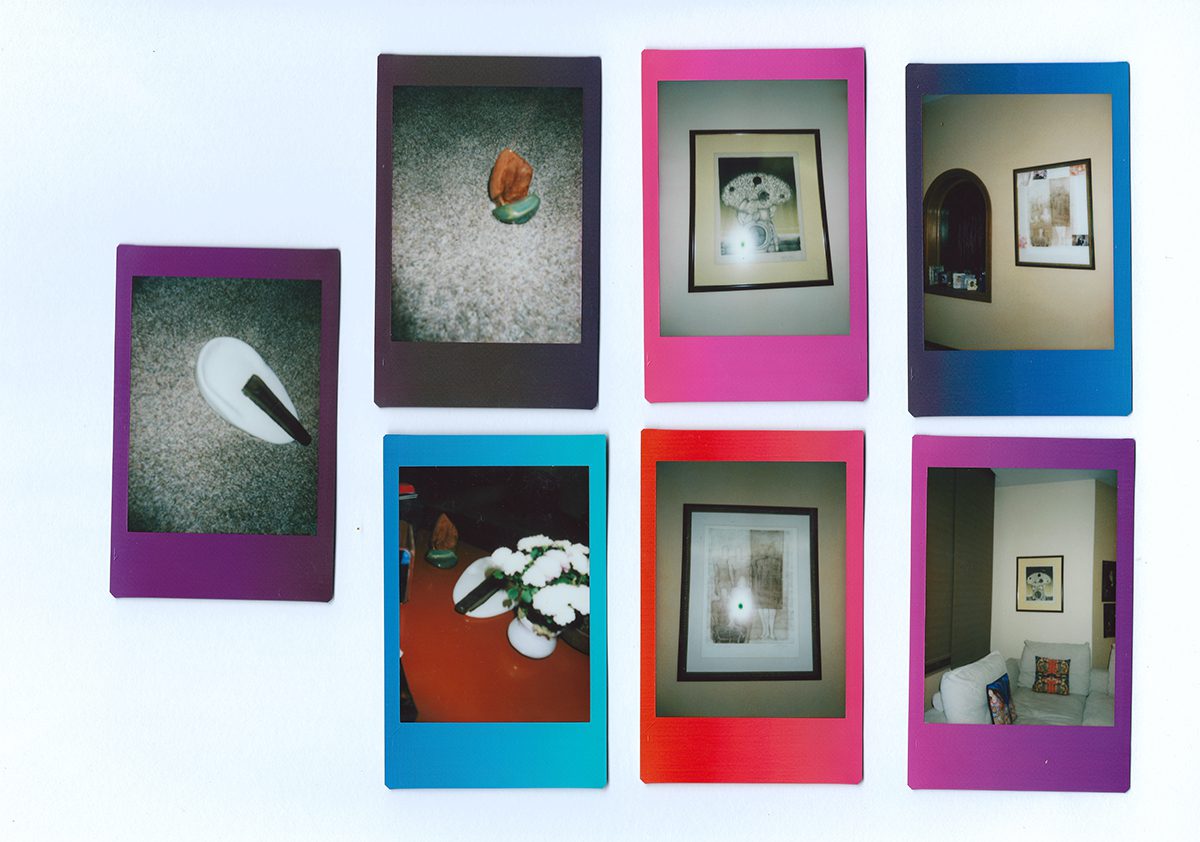
Polaroids of artworks at home by Hafsa Alkhudairi
Contemporary art lead for AlUla, Hafsa Alkhudairi, delves into the lives of the pieces in her family’s collections. Writing from the artworks’ perspectives, she gives a voice to the paintings and sculptures in her family home
“When the world is an ugly and cruel place, remember there are spaces of beauty, and I wanted that beauty to live in my house.” Reem Abbas and I (her daughter) were sitting in our family’s living room when she uttered those words. We chose all the artworks in the space, the two women who are currently still residing in the home. However, Iraqi pioneer artists are the majority of the Abbas-Alkhudairi collection, chosen by Abbas and showcasing her attachment to her heritage and history. “I have lived longer in Saudi than I have lived in Iraq. I feel Saudi, but I am always missing a part of me that I left behind in Iraq.”
I grew up with stories of Baghdad, surrounded by artworks that would tell me about their version of Iraq. I would see how my mother’s stories wove themselves into little histories encapsulated in the artworks she chose to acquire and display in our home and specifically our living room. She brought the piece of herself that she left behind back with her in fragments and memories only she can describe. Their existence in Saudi also recontextualised them and told a new story shared by the generations that have passed through the house and interacted directly or indirectly with the art.
This piece isn’t about me or my mother; it is about the artworks we live with and what they want to say about themselves.
Saadi Al-kaabi, 1997
Acquired by Reem Abbas after Saadi Alkaabi’s exhibition in 1998
I am a number of abstract figures shadowing each other like ghosts of past beings, humans, affected by life’s harsh experiences. My colours are bleak browns and clear whites. I am a moment of sadness and immortalisation of grief. Saadi Al-kaabi produced me as a reaction to the Desert Storm and the darkness of war that tore families and people apart. The hardship of war on humanity is within my nature.
Yet, I am living in a space of beauty and family. I have seen the children turn into adults and have their own children. I exist in a space of family, and I am adorned with images of the family experiencing their lives beyond the horrors of my existence.
I am in awe of who I am; the Gulf War shaped me with bitterness, pain, anger, and grief. When I was first created, I felt no need to pander to more positive emotions. And why should I? I am a product of horrors that have unfolded and evolved into a persona that is unforgiving.
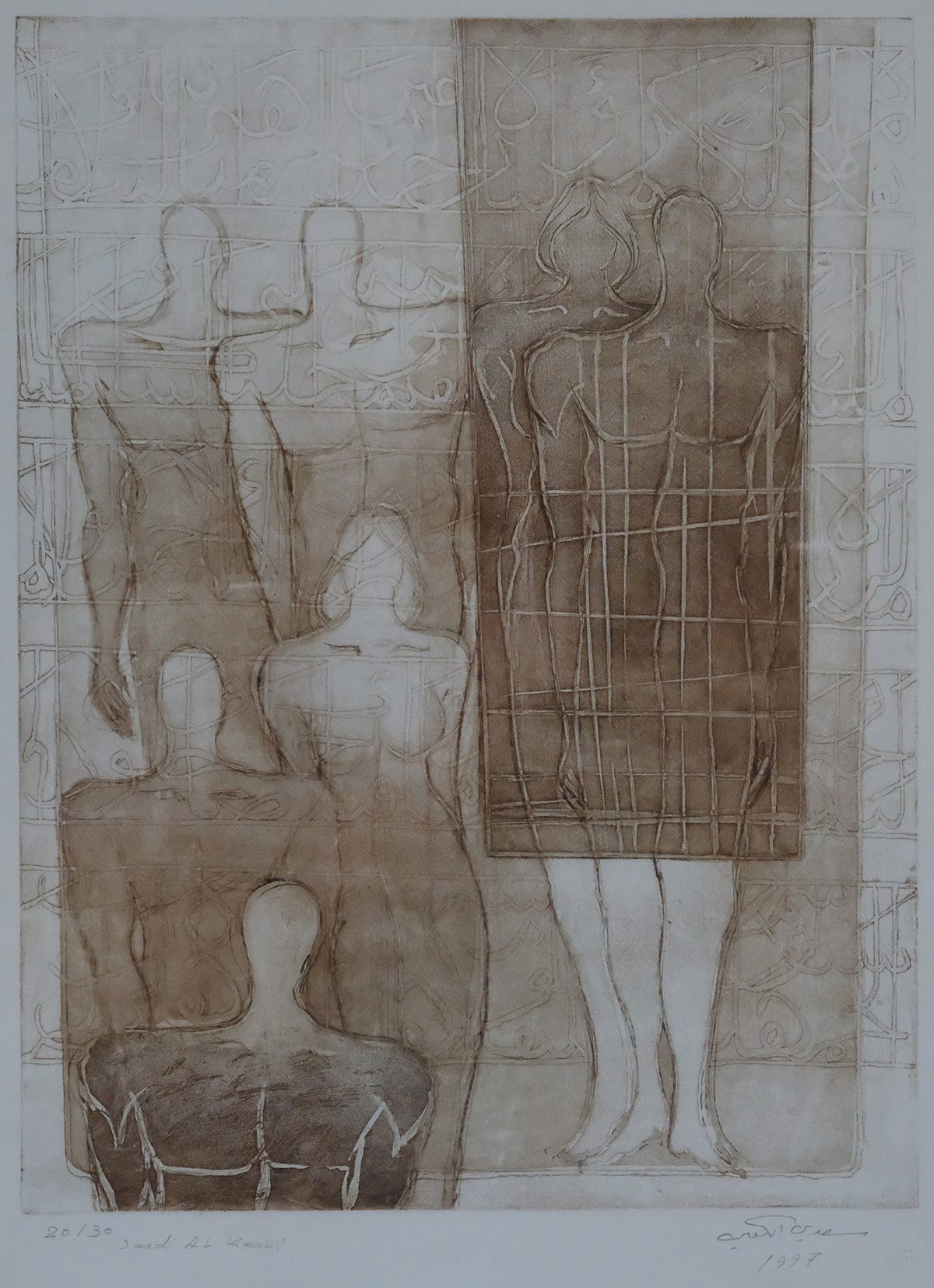
Untitled (1997), Saadi Alkaabi. Photographs by Mahmoud Essam, Courtesy of Reem Abbas
I should be arrogantly demanding they remove their photos from me and respect my history and my story, but I feel myself soften towards them, towards their existence. I want to see their happiness and to see them grow and unfold as each year passes. I have seen secrets and moments of celebrations and spent countless hours staring at the family as they stared at the television in front of them.
I also love the curious glances I get, the awe I produce in people, and especially the reflective looks I exchange with those who know me or my creator. The people who live in this house don’t always realise I exist, or they spend hours in my company reflecting on my story.
Maybe I should have been in a museum but I am so grateful to have existed in this space of intimacy and love that gives me the opportunity to separate myself from my own harrowing pain and complicated story. I have become forgiving and loving. A shape that looks over and protects those who pass in front of me and live with them. My figures are no longer ghosts of the past but guardians of the future.
Earthly Wonders Celestial Beings 961, 2019 & 902, 2021
Rand Abdul Jabbar
Acquired through Hafsa Alkhudairi directly from the artist in 2023.
Two pieces of glazed stoneware resting on a table is how people would describe us. Some people are unsure what we are meant to be, but they see the value in our existence and the beauty in our formation. The history we recreate is a moment of reflection, loss, and hope. We rebuild lost stories and recreate them through the inherited knowledge seeping into our very being.
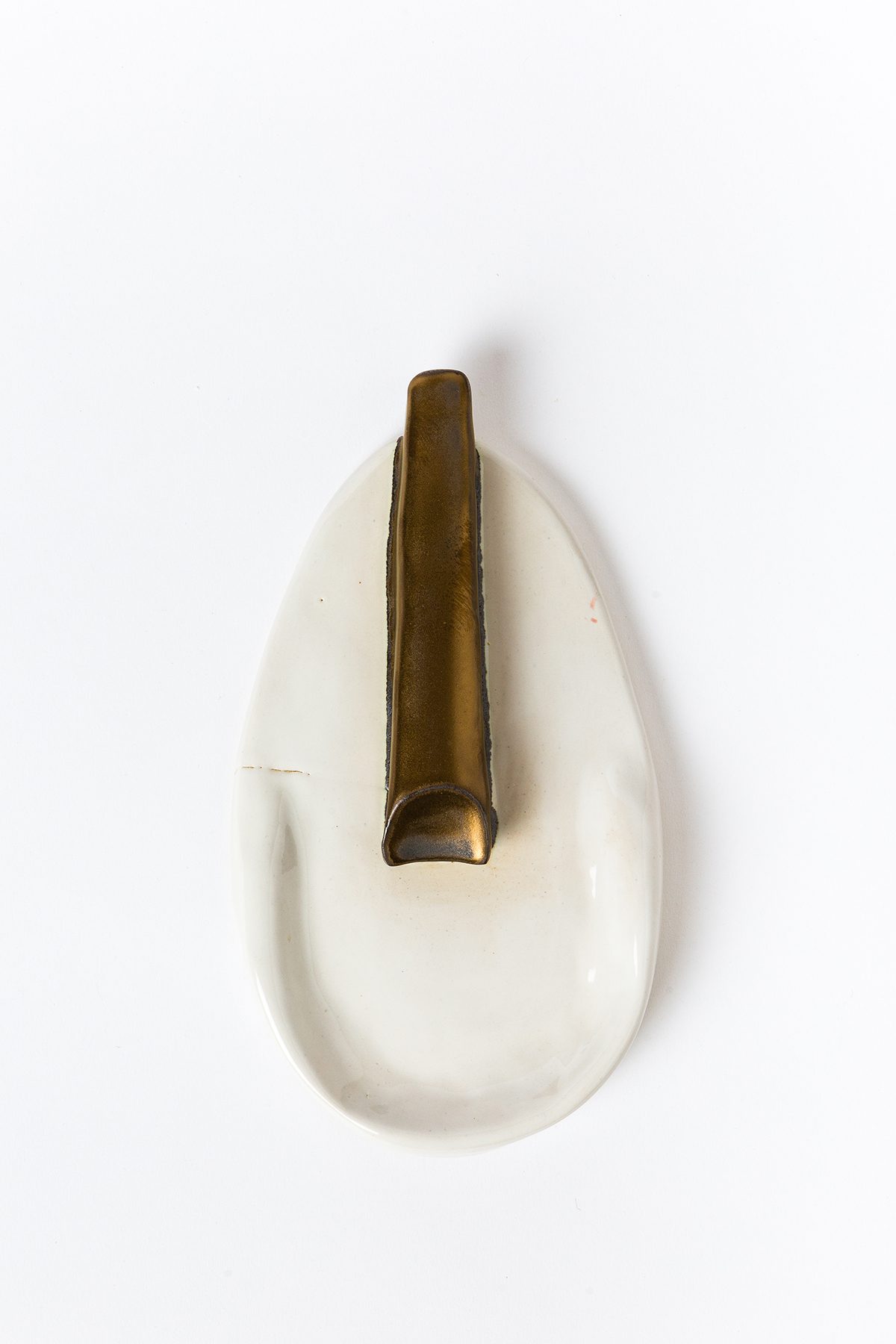
Earthly Wonders Celestial Beings (EWCB) 961 (2019), Rand Abduljabbar. Photographs by Ismail Noor. Courtesy of the artist
Moving into the space we now exist in was a return: a way to connect with the stories that created us. The experience or feeling that produced us reverberated in the walls, hands, and artworks with which we share the space. It is an ongoing conversation between us and the artworks around us. Our fellow art that have migrated to this place and have become our closest companions and confidants. Or we hope that they will… We are young compared to some of the work here. We are learning who we are and where we belong. We are learning how to be within our own ceramics.
Yet, here, we are connected to our ancestral past and connected to the people who live here. They look at us as if they are trying to decipher what we represent and think deeply about our existence in their spheres. We remind them of a form of their home lost in Iraq and not as easily accessible other than through memories or books. So, they are producing stories about us that blend into their story of existence. We are now part of the fabric of their reality. We constantly wonder what they think: are we usable objects or recognise us as art? This also brings up the question of how we want to be interacted with: do we want them to touch us and use us or just look at us?
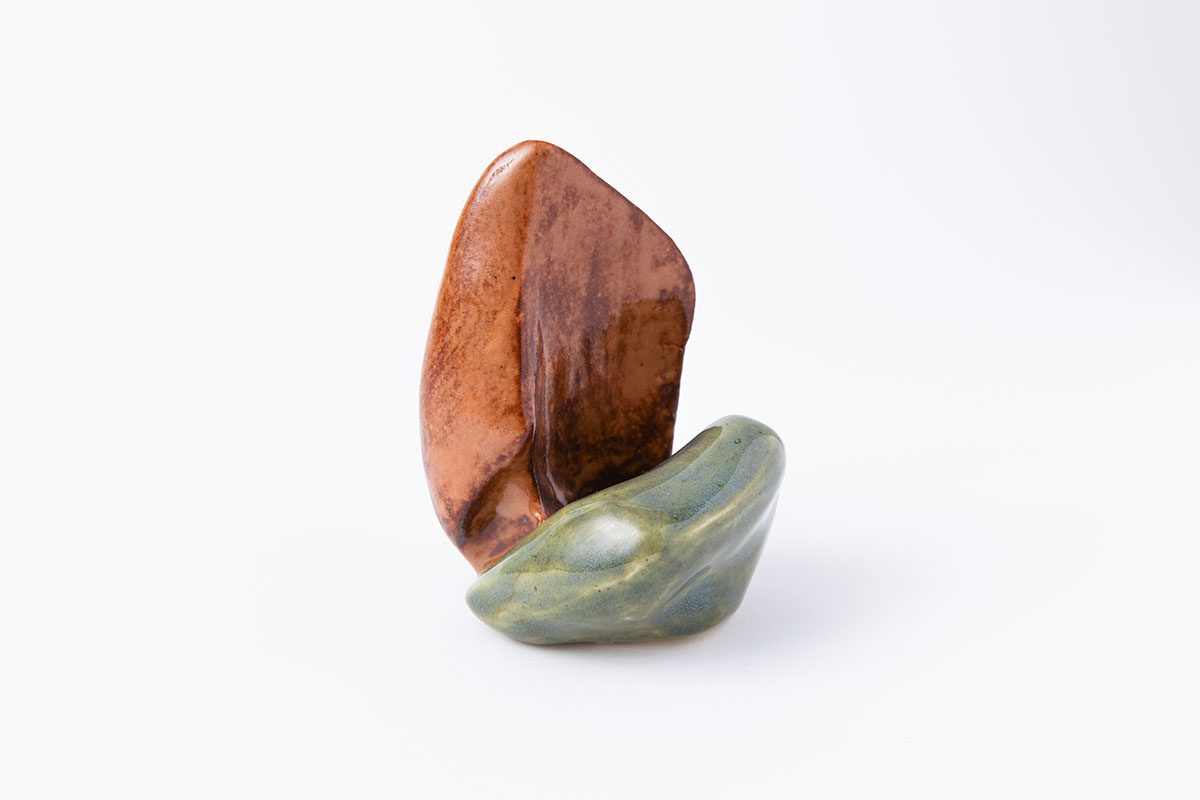
EWCB 902 (2021) Rand Abduljabbar. Photographs by Ismail Noor. Courtesy of the artist
We are new in this space, so we feel young and naive with so much growth to achieve and exact in this space. We will grow into the environment with the people who exist here. We will grow into the atmosphere with the artworks that surround us. Soon, we’ll break barriers and become more relaxed around each other and those around us. Soon, we’ll start teasing each other and enjoying our existence without pretences or intimidation.
Suad AlAttar, 1978
Gifted to Reem Abbas by her mother, Asmaa Algailani, who acquired it directly from the artist, Year Unknown.
I moved around between multiple homes in Baghdad, Iraq and then to Riyadh, Saudi Arabia. I feel my story and meaning have changed with every exchange of places. I am the manifestation of memory. I am a reminder for the woman, the matriarch, who sat with me most, of her life in Baghdad and the stories we have witnessed or experienced together. Yet, I am no longer the artwork that existed in that city, I am now recontextualised, placed into a position of nostalgia instead of reality.
In front of me is Saadi Alkaabi, and we look like we are a pair, but we truly aren’t. But we keep having conversations because we see the chaos and childhoods around us differently. I am older, so instead of just feeling softness towards the family. I feel like I am part of their family: I have seen all the children grow from babies to strong adults with their own babies. I remember them running around screaming and laughing and now I see the next generation doing the same. They pass by me whenever they want, pretending to be in a jungle instead of a living room.
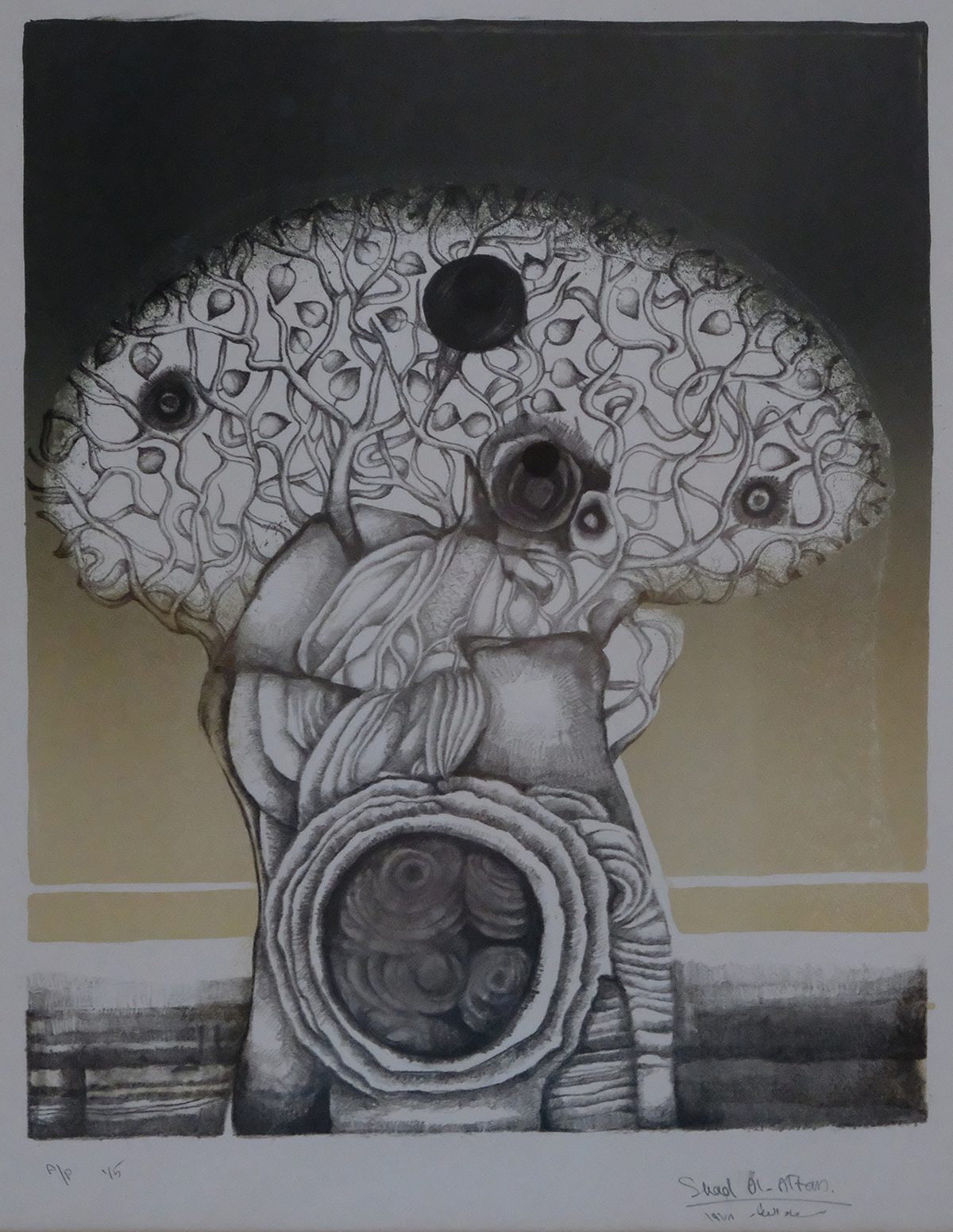
Untitled (1978), Suad AlAttar, photographs by Mahmoud Essam. Courtesy of Reem Abbas
However, my relationship with them isn’t as strong as it is with the matriarch. We look at each other and understand. She sees in me the fogginess of the mind and I see in her the struggle to be at peace. We are both survivors. We have fought hard to be where we are, but that doesn’t mean we don’t understand the nuances of our existence. We may not have had to struggle continuously like some of our peers who stayed behind in Baghdad but there is a pain in the diaspora and there is peace. Peace isn’t just the lack of war but it is a state of mind once acceptance fully sets in. We have accepted our new circumstances.
I represent a mind produced through leaves and tree trunks, complicated and nuanced but simple in existence. I am a reminder of a land and a time that will never be. Stories told in love and pain. I am humble enough to realise I am only part of the story, and it will continue past me into the next generation. Yet I am immortalised in my frame, holding vigil, protecting the memories I hold and will hold as the women of this family continuously confide in me. We had to leave Baghdad but Baghdad never left us. Yet we live and continue to thrive despite the hardship of leaving behind our histories.



